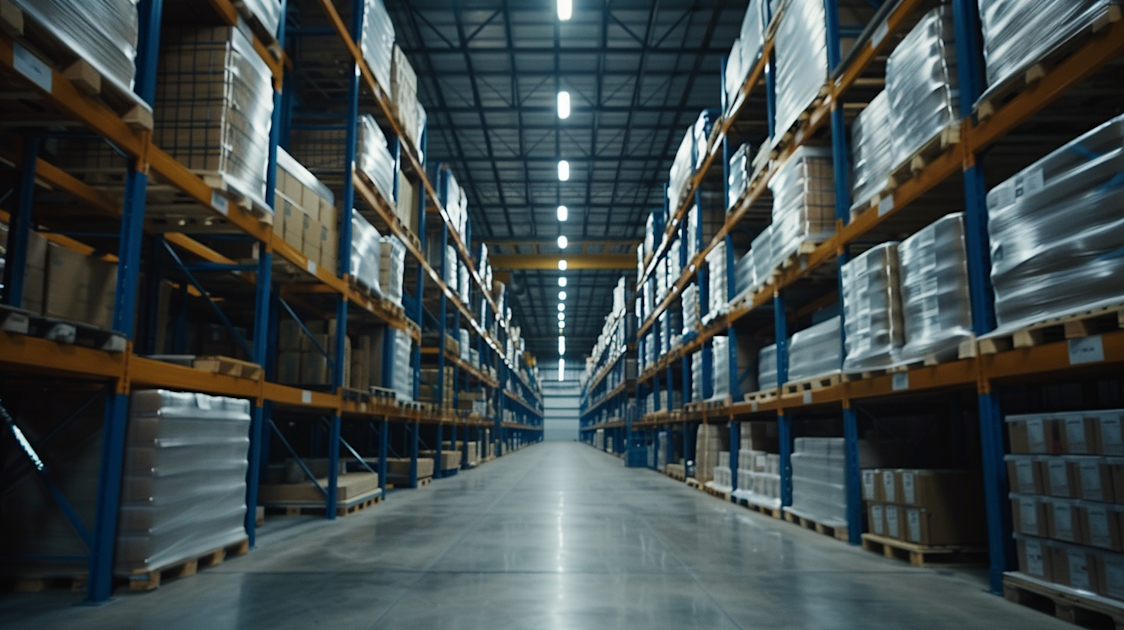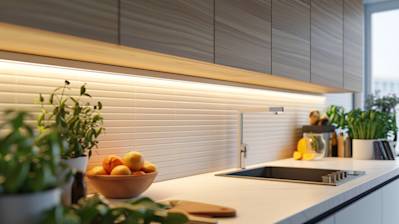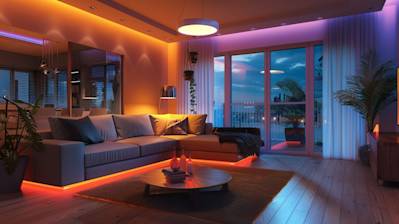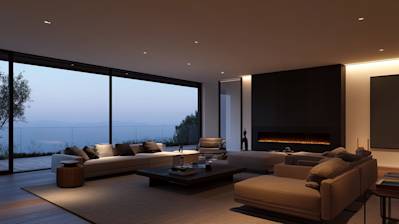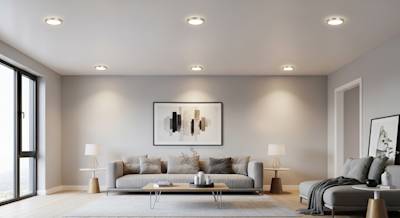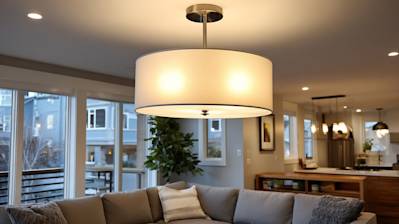If you're seeking to enhance your warehouse with a more cost-effective, energy-efficient and environmentally friendly light source, then LED warehouse lighting is your ideal solution. With their extensive lifespan and remarkable energy efficiency, LED lights have emerged as a leading light source in the warehouse industry. Catering to high ceilings, vast spaces, and demanding working environments, LED lights promise improved visibility, reduced maintenance costs and increased productivity levels.
Why Choose LED Warehouse Lighting?
LED (Light Emitting Diodes) lights have been revolutionizing the lighting industry with their numerous benefits. Among the many spaces LEDs can transform, warehouses are a notable mention. Large open spaces, high ceilings, and long operation hours make warehouses the perfect environment for LED lighting.
- Energy Efficiency: LED lights consume less power compared to traditional warehouse lights, such as metal halides or high-pressure sodium lights.
- Ambient Temperature: Irrespective of a hot or cold warehouse temperature, LED lights can maintain a consistent light output.
- Longer Lifespan: LEDs last about 25 times longer than traditional lights, reducing maintenance and lighting replacement costs.
- Light Quality: High Colour Rendering Index (CRI) of LEDs enhances perception and reduces errors and accidents.
- Environmentally Friendly: LEDs do not contain harmful substances, such as mercury, and are recyclable.
Comparing LED Warehouse Lighting with Other Lighting Forms
When it comes to lighting for warehouses, there are multiple options - traditional incandescent, Halogen, CFL, Metal Halide, and our hero of the day, LED. It's crucial to weigh the advantages and drawbacks of these existing traditional forms to understand why LED warehouse lighting stands out.
Traditional Incandescent and Halogen
Incandescent and halogen lights have been used in warehouses for a long time. However, they only convert approximately 20% of the energy they consume into light. The rest is emitted as heat, making them highly inefficient in energy use and not ideal for climate-controlled environments.
Compact Fluorescent Lights (CFLs)
CFLs are more energy-efficient than incandescent and halogen lights, consuming about 70% less energy. However, their lifespan is shorter than LED, and they contain trace amounts of mercury, a toxic element that can pose environmental and health risks.
Metal Halide
Being bright and efficient, metal halide lights have been popular in warehouses. However, they have a slow warm-up time, are prone to color shifting, and have significant energy loss because of heat, reducing their overall performance compared to LEDs.
How LED Warehouse Lighting Supersedes
When it comes to power consumption and lifespan, LED lights outshine other traditional warehouse lighting options. LEDs use solid-state technology, which allows for significant energy efficiency, versatility, and long life.
Energy Efficiency
LEDs outstrip other lighting options in terms of energy efficiency. They consume much less energy than other forms of lighting, making them an economically sound investment in the long term.
Longer Lifespan
LED lights have an impressive lifespan, lasting up to 50,000 hours, or even 100,000 hours in some cases, considerably reducing warehouse maintenance costs and time.
Better Light Quality
LED lights offer superior light quality, with better brightness and illumination. The superior light dispersion ensures there are no dark spots in the warehouse, ensuring a safer and more productive work environment.
Eco-friendly Options
Unlike some lighting alternatives, LED lights contain no toxic chemicals. They are 100% recyclable and can significantly decrease your warehouse’s carbon footprint, aligning with your company's sustainability goals.
LED Warehouse Lighting Solutions
Several different types of LED lights are ideal for warehouse use. The choice largely depends on the height of the ceilings, the tasks being performed, and the overall layout of the warehouse.
LED High Bay Lights: Designed for ceilings exceeding 20 feet, high bay LED lights offer powerful illumination over a large area, making them ideal for large, sprawling warehouse spaces.
LED Linear Lights: These multi-purpose lights are ideal for illuminating slim aisles in your warehouse, ensuring optimal visibility throughout.
LED Spotlights and Floodlights: Spotlight and floodlights are excellent for highlighting specific task areas or safety points within the warehouse.

Frequently Asked Questions about Led Warehouse Lighting
How Does LED Warehouse Lighting Improve Productivity?
Alternatively called industrial LED lighting, LED warehouse lighting can indirectly result in greater productivity. This is mainly because these lights provide bright and uniform lighting, helping workers perform their tasks more efficiently without straining their eyes. Moreover, LED lights are flicker-free, giving a more comfortable work environment for employees and reducing the risk of headaches and other working discomforts.
How Long Do LED Warehouse Lights Last?
The longevity of LED warehouse lighting is another reason for their growing popularity. A quality LED light typically lasts up to 50,000 hours — far longer than traditional light sources which usually tap out around 1,000 to 2,000 hours. Some high-end LED lights can even last up to 100,000 hours, which basically means you could leave the light on for 24/7 and it would take over a decade before needing replacement.
Are LED Warehouse Lights Energy-Efficient?
Absolutely. LED warehouse lighting can deliver the same light output as traditional lights, but by consuming far less energy. In fact, LED lights are typically about 80-90% more energy-efficient than conventional incandescent bulbs. This means less energy cost for the warehouse operation.
How Does LED Warehouse Lighting Impact the Environment?
LED lights are more environmentally friendly compared to other types of lighting. They consume less electricity, thereby reducing greenhouse gas emissions associated with power production. Unlike many traditional lighting options, LED lights contain no toxins or mercury. Plus, the long lifespan of LED lights results in fewer resources used for manufacturing and transporting replacement lights.
Can LED Warehouse Lights Work in Different Temperature?
LED warehouse lights are resistant to extreme temperatures, both hot and cold. This means they are adaptable to various warehouse environments and can function effectively in chillers and freezers where other lighting forms such as fluorescents might fail.
Are LED Warehouse Lights Durable?
Considering the type of activities that occur in a warehouse, having durable lighting is a major advantage. LED lights are solid-state devices, meaning they have no moving parts, glass, or filaments that can easily be damaged. Further, quality LED warehouse lights are designed to withstand shocks, vibrations, and harsh environmental conditions, providing long-lasting, reliable lighting in demanding warehouse settings.
What are the Lighting Design Considerals for LED Warehouse Lighting?
When planning for LED warehouse lighting, it's important to consider factors such as the size and layout of the space, the type of tasks performed, regulatory requirements for lighting levels, and the need for specialized lighting for specific areas or tasks. A well-designed LED warehouse lighting system should provide uniform, high-quality light, minimize shadows and glare, promote safety, and cater to the specific needs of your warehouse operation.
What is the Cost of Installing LED Warehouse Lighting?
The initial investment for LED warehouse lighting can vary depending on the size of the warehouse, the type of LED lights chosen, and installation costs. While LED lights tend to be more expensive upfront than traditional lighting options, the savings in energy costs and maintenance over time can more than offset the initial expense
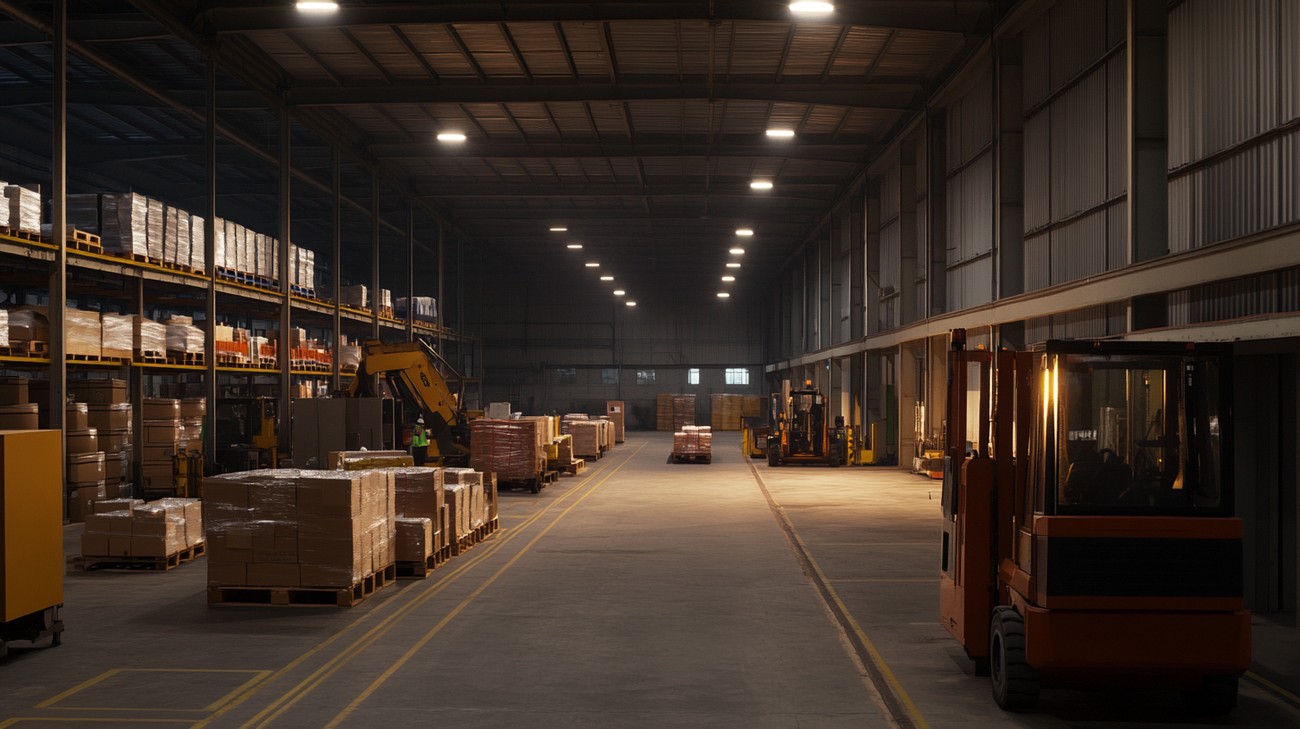
Pros of LED Warehouse Lighting
Energy Efficiency
LED warehouse lighting is considerably more energy efficient compared to conventional lighting systems. LEDs use less power per unit of light emitted. This means that aside from providing substantial lighting, these systems lower energy consumption, which in turn reduces utility costs. Their energy consumption is generally about 50% to 90% less compared to traditional incandescent, fluorescent, or halogen options.
Long Life Span
LEDs have a significantly longer lifespan than traditional warehouse lighting. An LED light can last up to 50,000 hours or more, equating to around 11 years of continuous operation or 25 years of 50% operation. This is 2 to 4 times longer than most fluorescent, metal halide, and significantly longer than any incandescent bulb. This reduces the frequency and costs of replacements, in turn, creating less landfill waste.
Environmentally Friendly
LEDs are free from harmful chemicals, such as mercury, which makes them environmentally friendly compared to traditional lighting systems. They are 100% recyclable and significantly reduce the carbon footprint. In addition, their longer lifespan means fewer replacement lights are needed, resulting in lower CO2 emissions, lower resource consumption for production, packaging, and transport.
Health and Safety
LED lights produce little to no infrared light and close to no UV emissions which make them suitable for goods and materials that are sensitive to heat or could be damaged by exposure to ultraviolet radiation. LED warehouse lighting also does not flicker, reducing the chances of headaches and eye strain among workers.
Bright, High-Quality Light
LEDs offer better light quality than traditional lighting systems. They can produce a bright, white light (or other color temperatures), which improves visibility within the warehouse. This is essential for safety purposes and productivity. They can also be easily dimmed or intensified based on the specific lighting needs in different areas of the warehouse.
Cons of LED Warehouse Lighting
Initial High Cost
The main disadvantage of LED warehouse lighting is the initial high cost. The upfront cost of LED lighting fixtures and bulbs is typically higher than the traditional lighting systems. However, the long-term savings in terms of energy usage, maintenance cost, and replacement can often more than make up for the initial investment.
Temperature Sensitivity
LED lights can be greatly affected by high temperatures. In super hot environments, the lifespan of LED lights may be shortened, and light output can be reduced. Therefore, in a high-heat warehouse, special considerations may be necessary to ensure sufficient cooling or heat dissipation for LED lights.
Light Direction
LED lights emit light in a specific direction, reducing the need for reflectors. While this can be seen as an advantage for certain applications, it can also pose a challenge in a warehouse setting where broad, diffused lighting may be required. This requires careful planning and installation to ensure the right type and number of LED lights are used to adequately illuminate the entire warehouse.
Dimming Limitations
While LED warehouse lights can be dimmed, they often require a specific type of dimmer to do so. Not all LED bulbs are dimmable, and those that are may not function with all types of dimmers. This can add complexity and potential extra cost to the lighting installation process. In some cases, it might also lead to LED lights buzzing or humming when dimmed.
Color Quality
While LED lights can produce a very bright, white light, the quality of the light color they produce can vary. When replaced at different times, LEDs might not match exactly in color. This can result in slightly different lighting conditions in different parts of the warehouse. Its noticeable contrast compared to natural light may also be less appealing.

Myths and Misconceptions about LED Warehouse Lighting
Every industrial or commercial entity is constantly seeking ways to maximize efficiency and minimize costs. One area that often comes into focus is lighting, specifically in large-scale environments like warehouses. Over recent years, LED (Light Emitting Diodes) warehouse lighting has proven itself to be a technological innovation that can bring about substantial energy and cost savings. However, misconceptions and myths surrounding LED warehouse lighting can prevent businesses from making the switch. Below, we will debunk some of these common myths.
Myth 1: LED lighting is too expensive
Setting the record straight
Generally, LED lighting options do carry a higher upfront cost than traditional lighting solutions. However, considering the long-term benefits, this becomes a null point. LED bulbs have a far superior operational lifecycle, lasting up to 50,000 hours or more, compared to only about 1,000 hours for an incandescent bulb and 8,000 hours for a CFL bulb. The amount saved in replacements and maintenance over time can far outweigh the initial expenditure.
Myth 2: LED lights are too bright for warehouse environments
Setting the record straight
There is a mistaken belief that LED lights emit an overwhelming bright and harsh light, unsuitable for large spaces like warehouses. The truth is, LED fixtures come with color temperature options that can customize the light from warm (yellowish) to cool (bluish), just like any other light source. Brightness can also be adjusted through proper fixture placement and light output settings. In fact, their superior luminous efficiency can lead to better illumination of wide-spanning warehouse spaces, improving visibility and safety.
Myth 3: LED lights aren't durable
Setting the record straight
LED lights are actually more durable than traditional lighting options. They're made from sturdy materials and are resistant to shock, vibration, and harsh environmental conditions, which makes them perfect for warehouse settings. Traditional lighting options can be susceptible to breakage, especially in active warehouse environments.
Myth 4: LED lights do not provide significant energy savings
Setting the record straight
LED lights are considered the most energy-efficient lighting solutions today. They waste very little energy in the form of heat and convert a majority of their energy directly into light. For instance, an LED light is about 80% to 90% more energy efficient compared to a traditional incandescent light. Energy savings consequently lead to financial savings over time, making LED lighting a cost-effective solution for large spaces such as warehouses.
Myth 5: LED lighting has poor Color Rendering Index (CRI)
Setting the record straight
The CRI is a measure of a light source's ability to reveal the actual color of objects as compared to a natural light source. Some argue that LED lights score low on the CRI, thus affecting the quality of visibility. However, modern LED lights have made significant improvements in this aspect. With advancements in technology, LED lights are now able to offer a CRI above 80, indicating excellent color-rendering capabilities which can be crucial in a warehouse settings, especially where accurate color identification of items is necessary.
Myth 6: LED lighting can interfere with Wi-Fi signals
Setting the record straight
The notion that LED lights interfere with Wi-Fi signals is largely unfounded. In fact, technology market leaders like Philips and CISCO have developed connected lighting systems that utilize the LED lighting infrastructure to support Wi-Fi based services in commercial settings.
In conclusion, it's important to break through these myths to experience the true value of LED warehouse lighting. When comparing the long-term savings on energy costs, maintenance, and replacements with the initial installment expenditure, LED technology stands out as a clear winner. Not to mention the improvements in lighting quality, sustainability, and the overall working environment. Therefore, embracing LED lighting for your warehouse is not just a smart choice; it's a forward-thinking strategy for sustainable and efficient operations.
Summary
Deciding to switch to LED warehouse lighting is a fantastic decision given the numerous benefits that come with it. The energy efficiency, coupled with the long lifespan, make them an excellent choice for any warehouse. They produce superior light quality which ensures a safe and productive workplace. More so, LED warehouse lighting can fully operate even in extreme weather conditions, making them a reliable choice for any environment.
There are many advantages of using LED warehouse lighting and a few significant ones include reduced energy costs and maintenance needs. They also contribute to conserving the environment because they use less energy and last longer than traditional lighting. With LED lights, you can be assured of bright, continuous light that enhances workers' productivity and overall warehouse operations.
LED warehouse lighting stands out among other lighting options due to its excellent performance, sustainability, and cost-effectiveness. This type of lighting system is suitable for warehouses of any size and can easily withstand the typical wear and tear in such environments. Investing in LED warehouse lighting is definitely a smart move that saves money in the long run, while providing high-quality light for daily operations.
About Sagan Electric
Sagan Electric is a premier electrical services company headquartered in the lush city of Sacramento, CA. Over the years, we've built a glowing reputation for delivering top-notch services to both residential and commercial clients. Our team of experienced, dedicated, and friendly electricians are always ready to light up your homes and businesses, ensuring that you're never left in the dark. With Sagan Electric on the job, you can always count on us to provide quality, efficiency, and good old-fashioned customer service. After all, we're not just a company – we're your neighbors!
Tags: commercial lighting, energy efficient, industrial lighting,

